#fatma emetullah
Text
Portrait of the daughters of Mehmed IV / IV. Mehmed lányainak portréja
IV. Mehmed szultánnak csupán három lánya érte meg biztosan a felnőttkort. Only three of Mehmed IV's daughters reached adulthood for sure.
Hatice Sultan
Hatice was Mehmed's eldest daughter, born in 1660 (or earlier). Her mother was probably Emetullah Rabia Gülnüş Sultan. Her wedding took place in 1675, after her father returned home from the Polish campaign and organized a huge series of ceremonies to crown the victory. It was then that the two brothers of Hatice, Mustafa (later Mustafa II) and Ahmed (later Ahmed III), were circumcised. Hatice Sultan’s husband was Musahip Sarıkçı Mustafa Pasha, with whom their first child, Sultanzade Mehmed Bey, was born the following year. Then in 1677 another son was born, Hasan Bey.
Hatice was widowed in October 1686, and from then on her sons were taken to the palace to be educated there. She lived as a widow for a time but was remarried in 1691. This time Moralı Hasan Pasha became her husband, who rose to the rank of Grand Vizier. After 1695, Hatice Sultan gave birth to a girl, Ayşe. We know this because it was recorded that after the birth, the Valide Sultan, Emetullah Rabia Gülnüş, visited her daughter in her palace. And Emetullah Rabia Gülnüş was a valide from 1695. The little girl probably died in 1717.
A high rank, an influental life was soon followed by a loss of grace, and Hatice's husband was exiled to Izmit in 1704. Hatice asked permission from the sultan to go with her husband, which she received, so she also traveled to Izmit. In 1707 the pasha was then pardoned, and was made the governor of Rakka. Hatice no longer followed the pasha there but returned to Istanbul. The pasha died in December 1713 and Hatice was widowed again. She never remarried.
Hatice spent her widowhood with collection porcelains and making parties. One of these parties happened during the disastrous revolt of 1730. We cannot rule out that she was also part of the rebellion. She was holding a banquet for the sultan and the grand vizier, along other high-ranking dignitaries, at her palace and it seems like she prevented the grand vizier from moving on to Istanbul that night in order to take immediate action against the rebels. We dont know if she did that because she secretly was a member of the opposition party, or she was just making a mistake? Anyhow, it led to her brother Ahmed Ill’s dethronement.
She lived a long life, seeing the reign of a total of six sultans: her father Mehmed IV; her uncles Suleiman II and Ahmed II; younger brothers Mustafa II and Ahmed III; but even her nephew's reign as she was alive during the reign of Mahmud I. She died on July 5, 1743, and was buried in the complex of her grandmother, Turhan Hatice.

Fatma Emetullah Sultan
Certainly she was born after 1675, because the ambassador report written in 1675 does not list her among Mehmed's children. Usually 1675 is given as her date of birth for this reason, but considering that she was married in 1695, it seems to be early in 1675, her date of birth may be closer to 1680. The identity of her mother is likely Emetullah Rabia Gülnüş, based on her name.
Her first husband was Tırnakçı Çerkez İbrahim Pasha, whom she married in September 1695. Their first child, Rukiye Hanimsultan was born in 1696. Rukiye Hanimsultan reached adulthood and died around 1720. About her daughters we know that: in 1708, Rukiye Hanimsultan married Sirke Osman Paşa (d. 1724), who had been called from Bosnia; after Rukiye Hanimsultan died, Sirke Osman Paşa married Emetullah Sultan, one of the daughters of Mustafa II.
Fatma Emetullah's first husband was executed in 1697, and then the widow sultana remarried in 1698. This time Topal Yusuf Pasha was the designated husband from whom a daughter was born in 1700, Safiye Hanimsultan, who died young, presumably in 1711. Fatma Emetullah is believed to have died in December 1700 of birth-complications due to the birth of Safiye Hanimsultan. Other sources suggests she died of plague, another suggests she died of tuberculosis. Her funeral procession started from her mansion in Bayezit, with the Chief of Black Eunuchs Nezir Agha and her husband Yusuf Pasha leading it, passed in front of the Alay köşkü, and terminated at the Valide Mosque, where she was laid to rest next to her father Mehmed IV.

Ümmügülsüm / Ümmi Sultan
She was born around 1680 but the identity of her mother is unknown. One of her first mentioning is from a harem register of 1691, when her uncle Suleiman II moved the harem to Edirne. She is the only niece to show up on the list, which raises interesting questions. Her sister, Fatma Emetullah, was also not yet married at the time, yet she is not mentioned in the list. This is because Fatma Emetullah certainly spent her time in the Old Palace next to her mother, Emetullah Rabia Gülnüş. The fact that Ümmügülsüm was not in the Old Palace may indicate that she may not have been the child of Emetullah Rabia Gülnüş Sultan or Afife Hatun living there. Her mother could have been someone else who might have already died, so the little princess could stay at Topkapi Palace.
Ümmügülsüm was very close to her uncle Ahmed II. She was the one who married her off in December 1693 to his close servant, Silahdar Çerkes Osman Pasha. They settled in a luxurious palace with the Pasha and had at least two children together. Their daughters were Hatice Hanimsultan and Fatma Hanimsultan, of whom Fatma probably reached adulthood and died around 1730. We know nothing more about the children of Ümmügülsüm. Ümmügülsüm and the pasha were very influential, living a magnificent life. In April 1694, for example, they held a huge party in their palace, for which the sultan, his Haseki - the last Haseki - Rabia, and several political leaders attended. Ümmügülsüm Sultan died before her fortieth birthday in 1720. Some say smallpox caused her death. She was buried in the mosque complex of Turhan Hatice.
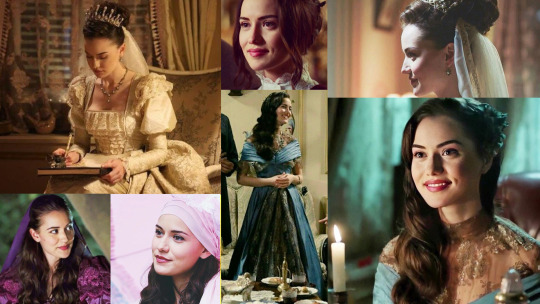
Beside these daughters, Mehmed IV's had other daughters as well. One of them is Ayşe, who was born around 1673/4, and died young. Her mother was certainly Emetullah Rabia Gülnüş, the Haseki Sultan of Mehmed. All we know is that the princess was promised to Kara Mustafa Pasha around 1675/6, but the wedding could never take place because the princess did not reach adulthood.
Two anonymous sultanas are also known, who are listed as daughters of Mehmed. All we know is one of them married Kasım Mustafa Pasha in 1687, who was Edirne's beylerbey. The other girl is said to have been the daughter of Gülbeyaz. Beside them, some also mention a girl named Gevher or Gevherhan, who may have been Mehmed IV’s sister rather than her daughter and they consider her as her daughter just because of a mistake.
Used sources: J. Dumas - Les perles de nacre du sultanat; N. Sakaoglu - Bu Mülkün Kadin Sultanlari; M. C. Uluçay - Padişahlarin Kadinlri ve Kizlari; A. D. Alderson - The Structure of the Ottoman Dynasty; L. Peirce - The Imperial Harem: Women and Sovereignty in the Ottoman Empire; C. Finkel - Osman's Dream: The Story of the Ottoman Empire; M. Özgüleş - The women who built the Ottoman Empire: Female Patronage and the Architectural Legacy of Gülnüş Sultan
* * *
Hatice Sultan
Hatice volt IV. Mehmed legidősebb lánya, 1660-ban (vagy korábban) született. Édesanyja valószínűleg a szultán Haszekije, Emetullah Rabia Gülnüş volt. Esküvőjére 1675-ben került sor, miután apja hazatért a lengyel hadjáratból és a győzelmet megkoronázván hatalmas ünnepségsorozatot rendezett. Ekkor került sor Hatice két öccsének, Musztafának (későbbi II. Musztafa) és Ahmednek (későbbi III. Ahmed) a körülmetélésére. Hatice Sultan férje Musahip Sarıkçı Mustafa Pasa lett, akivel a következő évben megszületett első közös gyermekük, Sultanzade Mehmed Bey. 1677-ben született még egy fiuk, Hasan Bey.
Hatice 1686 októberében megözvegyült, fiai innentől a palotába kerültek, hogy ott oktassák őket. Egy ideig özvegyen élte életét, de 1691-ben újraházasították. Ezúttal Moralı Hasan Pasa lett a férje, aki a nagyvezíri rangig emelkedett. 1695 után Hatice Sultan életet adott egy kislánynak, Ayşénak. Ezt onnan tudjuk, mert feljegyezték, hogy a szülés után a valide szultána, Emetullah Rabia Gülnüş meglátogatta lányát annak palotájában. A kislány valószínűleg 1717-ben hunyt el.
A magas rangot, befolyásos életet hamarosan kegyvesztettség követte és Hatice férjét 1704-ben Izmitbe száműzték. Hatice engedélyt kért a szultántól, hogy férjével tarthasson, melyet megkapott, így ő is Izmitbe utazott. 1707-ben aztán a pasának megbocstottak és Rakka kormányzójává tették meg. Hatice oda már nem követte a pasát, hanem visszatért Isztambulba. A pasa 1713 decemberében elhunyt, Hatice pedig megözvegyült. Hatice sosem házasodott újra.
Özvegységének éveit arra használta, hogy porcelánt gyűjtött, és ünnepélyes esteket szervezett. Az egyik ilyen este épp egybeesett az 1730-as lázadással. Egyesek szerint Hatice maga is felelős volt az eseményekért, ugyanis nem engedte a nagyvezírnek - aki jelen volt az estélyen -, hogy távozzon és a lázadással törődjön. Lehet, hogy Hatice ezt szánt szándékkal tette, mert a lázadókkal volt titkon, de az is lehet, hogy egyszerűen végzetes hibát vétett. Akárhogyan is, a lázadás során Hatice öccsét, III. Ahmedet trónfosztották.
Hosszú életet élt, összesen hat szultán uralkodását látta: apjáét IV. Mehmedét; nagybátyjaiét II. Szulejmánét és II. Ahmedét; öccseiét II. Musztafáét és III. Ahmedét; de még unokaöccse I. Mahmud uralkodása alatt is életben volt. 1743 július 5-én hunyt el és nagyanyja, Turhan Hatice komplexumában temették el.

Fatma Emetullah Sultan
Minden bizonnyal 1675 után született, mert az 1675-ben írt követi jelentés nem listázza IV. Mehmed gyermekei között. Általában 1675-t adják meg emiatt születési idejének, de figyelembe véve, hogy 1695-ben házasították ki, az 1675 korainak tűnik, inkább lehet születési ideje közelebb az 1680-hoz. Édesanyja kiléte neve alapján valószínűsíthető, így Emetullah Rabia Gülnüş szultána lányaként tekintenek Fatma Emetullahra.
Első férje Tırnakçı Çerkez İbrahim Pasa volt, akivel 1695 szeptemberében házasodtak össze. Egy gyermekük született, Rukiye Hanimsultan 1696-ban. Rukiye Hanimsultan megérte a felnőttkor és 1720 környékén hunyt el. Fatma Emetullah első férjét 1697-ben végezték ki, majd az özvegy szultána 1698-ban újra férjhez ment. Ezúttal Topal Yusuf Pasa volt a kijelölt férj, akitől 1700-ban egy lánya született, Safiye Hanimsultan, aki fiatalon elhunyt, vélhetően 1711-ben. Fatma Emetullah vélhetőleg A Safiye Hanimsultan születése során fellépő szülési komplikációk miatt halt meg 1700 decemberében.

Ümmügülsüm/Ümmi Sultan
1680 között született, édesanyja kiléte nem ismert. Egyik első említése egy 1691-ből származó háremjegyzék, mikor nagybátyja II. Szulejmán a háremet Edirnébe kölöztette. Ő az egyetlen unokahúg, aki a jegyzékben feltűnik, ami érdekes kérdéseket vet fel. Nővére, Fatma Emetullah ekkor szintén nem volt még kiházasítva, őt mégsem említi a jegyzék. Ennek oka, hogy Fatma Emetullah minden bizonnyal a Régi Palotában töltötte idejét édesanyja, Emetullah Rabia Gülnüş mellett. Az, hogy Ümmügülsüm nem a Régi Palotában volt arra utalhat, hogy talán nem az ott élő Emetullah Rabia Gülnüş Sultan vagy Afife Hatun gyermeke volt. Édesanyja valaki más lehetett, aki talán már elhalálozott, így a kishercegnő a Topkapi Palotában maradhatott.
Ümmügülsüm igen közel állt nagybátyjához II. Ahmedhez. Ő volt az, aki kiházasította szultánát 1693 decemberében Silahdar Çerkes Osman Pasához. A Pasával fényűző plotában telepedtek le és legalább két gyermekük született. Lányaik, Hatice Hanimsultan és Fatma Hanimsultan voltak, akik közül Fatma valószínűleg megérte a felnőttkort és 1730 körül hunyt el. Nem tudunk mást Ümmügülsüm gyermekeiről. Ümmügülsüm és a pasa igen befolyásosak voltak, pezsgő életet éltek. 1694 áprilisában például hatalmas ünnepélyt rendeztek palotájukban, melyre hivatalos volt a szultán, annak haszekije - az utolsó Haszeki - Rabia és több politikai vezető is. Ümmügülsüm Sultan negyvenedik születésnapja előtt hunyt el, 1720-ban. Egyesek szerint himlő okozta a halálát. Turhan Hatice mecsetkomplexumában temették el.

Mehmednek a fentebb leírt lányok mellett voltak további lányai is. Egyikük, egy Ayşe nevű kislány volt, aki 1673/4 környékén született és korán meghalt. Édesanyja minden bizonnyal Emetullah, Rabia Gülnüş, a szultán Haszekije volt. Annyit tudunk, hogy a hercegnőt 1675/6 környékén odaígérték Kara Mustafa Pasához, ám az esküvő sosem jöhetett létre, mert a hercegnő nem érte meg a felnőtt kort.
Két névtelen szultána is ismert, akiket Mehmed lányaiként jegyeznek. Egyikükről annyit tudunk, hogy Kasım Mustafa Pasához ment nőül 1687-ben, aki Edirne helytartója volt. A másik lány a legendák szerint Gülbeyaz lánya volt. Mellettük néhányan egy Gevher vagy Gevherhan nevű lányt is szoktak említeni, aki lehet, hogy inkább volt Mehmed testvére, mint lánya és csupán keveredés miatt tekintik néhányan az ő lányaként.
Felhasznált források: J. Dumas - Les perles de nacre du sultanat; N. Sakaoglu - Bu Mülkün Kadin Sultanlari; M. C. Uluçay - Padişahlarin Kadinlri ve Kizlari; A. D. Alderson - The Structure of the Ottoman Dynasty; L. Peirce - The Imperial Harem: Women and Sovereignty in the Ottoman Empire; C. Finkel - Osman's Dream: The Story of the Ottoman Empire; M. Özgüleş - The women who built the Ottoman Empire: Female Patronage and the Architectural Legacy of Gülnüş Sultan
#ümmi#ümmügülsüm#fatma#fatma emetullah#gevher#gevherhan#Mehmed IV#turhan hatice#Emetullah Rabia Gülnüş#emetullah rabia#emetullah#rabia gülnüş#Hatice
22 notes
·
View notes
Photo


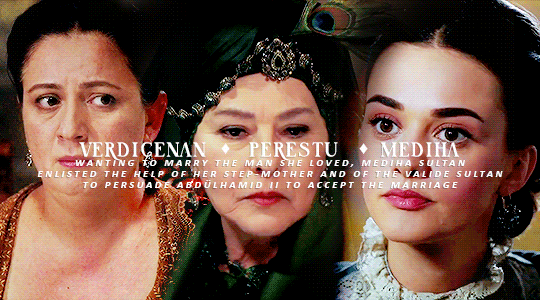




Alliances within the Ottoman Imperial harem -- requested by anon
#history#historyedit#ottoman history#safiye sultan#handan sultan#kosem sultan#halime sultan#emetullah rabia gulnus sultan#turhan hatice sultan#ayse humasah hanimsultan#verdicenan kadin#rahime perestu sultan#mediha sultan daughter of abdulmecid i#fatma sultan daughter of abdulmecid i#seniha sultan daughter of abdulmecid i#hibetullah sultan daughter of abdulhamid i#esma sultan daughter of abdulhamid i#ottomanladiesedit#*requested
326 notes
·
View notes
Photo
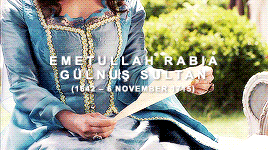

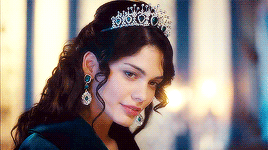




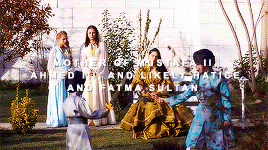
Emetullah Rabia Gülnüş Sultan was Haseki Sultan of Mehmed IV, as well as Valide Sultan to their sons Mustafa II and Ahmed III, and likely the mother of Hatice and Fatma Sultan. She accompanied Mehmed, his mother Turhan Hatice, Şehzade Mustafa and Mehmed's sisters, together with a large entourage, in processions marking the Polish war in 1672 and 1673. In 1683, she joined a similar large entourage in a procession marking the siege of Vienna. Gülnuş became Valide Sultan in 1695, when her elder son Mustafa II ascended the throne. Mustafa kept close contacts with his mother, and is said to have honored her demonstratively whenever there was an occasion. She was very influential during the reigns of her sons and is sometimes referred to as “the last representative of the Sultanate of Women”. Among her projects was a complex of buildings in Üsküdar, which included a mosque, soup kitchen, school, fountain and tomb.
821 notes
·
View notes
Quote
In addition to letters and gifts, information about the lives of royal women in other European empires came to the attention of Ottoman women through the presence of various persons who were not part of the dynastic family but who had access to the women in the Ottoman harem: freed slaves, palace eunuchs, harem agents or kiras, and Ottoman princesses who had married and gone to reside in the harems of their own households. Among the good deeds that royal women practiced was the manumission and provisioning of their household slaves. Having left the harem and often having been married off to men in the Ottoman palace administration, these exfemale slaves, like the female progeny of the harem women, could cultivate contacts for women within the harem, and provide a wealth of information about events in the palace and beyond. Meleki Hatun, having initially served in the harem as Kösem Sultan’s servant, and then Turhan’s retainer, was married to a palace page and manumitted by the latter valide. Until the couple were killed in 1656 by disgruntled Ottoman troops, Meleki served Turhan as an important liaison to the world outside the harem walls.
The harem eunuchs, as a “third” sex in the administration of the Ottoman harem, served the political interests of Ottoman royal women living in the harem much as they had served Byzantine queens and princesses centuries earlier in the emperor’s palace. As they posed no possibility of corrupting the dynastic line of the sultans, the eunuchs could extend the channels of both influence and communication that existed between Ottoman women and the world outside of the harem walls. Close financial links existed between the chief black eunuch, referred to as the Darüsaade Ağası, and the pious foundations of the palace women, particularly those belonging to the queen mother. In Hürrem’s endowment deed of 1540 which established the provisions for her İstanbul foundation, the Haseki mosque complex, the chief black eunuch was entrusted with the management of all finances of the endowment. In Turhan Sultan’s foundation charter, the chief black eunuch was allocated 50 akçe per day to administer the endowment that Mehmed IV’s mother had established for the Yeni Valide mosque complex of Eminönü. Mehmed’s wife, Emetullah Gülnuş Sultan, appointed the chief black eunuch, Yusuf Ağa, as overseer of her extensive holdings in Mecca. Earlier in the sixteenth century, the chief eunuch, Gazanfar Ağa, and particularly the female members of his family, were valued members, first in Nurbanu’s and then Safiye Sultan’s harem retinue. Gazanfar’s rise to power in the Ottoman government followed a more familiar pattern, but it is the story of his sister Beatrice which is interesting for us here because it illustrates the frequency and facility with which information about palace women and occasionally the women themselves could move across the borders between European empires and the Ottoman lands.
Originally the son of Giacomo Michiel, Gazanfar had been traveling to Albania in 1559 with his brother, his Venetian mother Franceschina Zorzi Michiel, and his sisters, one whom we know was named Beatrice Michiel, when the family was captured by an Ottoman ship. Both sons, once captured, became eunuchs in the service of the Ottoman Sultan Selim II. Gazanfar’s brother died, perhaps as a result of castration, but Gazanfar went on to serve in the higher echelons of the Ottoman household as a royal household attendant, or has odabaşı, to Murad III and then to Mehmed III. Franceschina, Gazanfar’s mother, had been able to secure the release of herself and her daughter, Beatrice, and they left Ottoman territories for Italy. We learn later that Beatrice married in Italy and had at least two sons before becoming a widow. Back in İstanbul, Gazanfar, as part of a strategy to increase his palace network, arranged a second marriage for his sister Beatrice to a man named Ali Ağa. She came to İstanbul, converted to Islam, became Fatma Hatun and assisted her husband as he moved up the Ottoman administrative hierarchy to become a leader of the Ottoman Janissaries. This was a position which provided his now Muslim, once-Venetian wife with access both to the harem women and to the extended world of the Ottoman administration. Additionally, with her close family ties to Venice, ties which included her mother and two children from her first marriage, she served as a conduit for information about Italian royalty to Ottoman imperial women and vice versa. Until the final years of her life, Beatrice, aka Fatma Hatun, remained linked to her natal roots in Italy and even in her will allocated charitable support to several Catholic convents in Venice
On Ottoman Imperial women’s contact with the outside world, taken from: Lucienne Thys-Şenocak, Ottoman Women Builders: The Architectural Patronage of Hadice Turhan Sultan
30 notes
·
View notes
Text
Az uralkodócsalád!
I. Szelim szultán + Ayse Hafsza szultána = I. Szulejmán szultán, Hatice, Fatma, Beyhan és Sah szultánák
I. Szulejmán szultán + Mahidevran szultána = Musztafa és Ahmed hercegek, Raziye szultána
I. Szulejmán szultán + Hürrem szultána = Mehmet, Abdullah, Bayezid és Cihangir hercegek, II. Szelim szultán, Mihrimah szultána
II. Szelim szultán + Nurbanu szultána = III. Murad szultán, Esmahan, Gevherhan és Sah szultánák
II. Szelim szultán további gyermekei ismeretlen ágyasoktól: Cihangir, Musztafa, Abdullah, Oszmán és Szulejmán hercegek, Fatma szultána
III. Murad szultán + Szafije szultána = III. Mehmed szultán, Fatma, Ayse és Hümasah szultánák
III. Murad szultán további gyermekei ismeretlen ágyasoktól: Musztafa, Szelim, Bayezid, Abdullah, Oszmán, Szulejmán, Mahmoud, Hasan, Abdurrahman, Ahmed, Yakub, Alemsah, Yusuf, Hüseyin, Korkud, Ali, Ishak, Ömer, Alaüddin és Davud hercegek, Ayse, Fatma, Hatice, Fahriye, Hümasah, Mihrimah és Mihriban szultánák
III. Mehmed szultán + Handan szultána = I. Ahmed szultán
III. Mehmed szultán + Halime szultána = I. Musztafa szultán, Dilruba szultána, Mahmoud és Yahya hercegek
I. Ahmed szultán + Mahpeyker Kösem szultána = Kászim és Mehmed hercegek, IV. Murad szultán és I. Ibrahim szultán, Ayse, Atike, Fatma és Gevherhan szultánák
I. Ahmed + Mahfiruze szultána = II. Oszmán szultán
I. Ahmed + Gülbahar szultána = Bayezid herceg
IV. Murad szultán + Ayse szultána = Ahmed és Aladdin hercegek, Ismihan szultána
IV. Murad szultán további gyermekei ismeretlen ágyasoktól: Szulejmán és Mehmed hercegek, Hafsza, Ayse, Rukiye, Szafije és Gecher szultánák
I. Ibrahim szultán + Turhan Hatice szultána = IV. Mehmed szultán, Gevherhan és Beyhan szultánák
I. Ibrahim szultán + Saliha Dilasub szultána = Ümmügülsüm és Ayse szultánák, II. Szulejmán szultán
I. Ibrhaim szultán + Hatice Muazzez szultána = II. Ahmed szultán, Fatma szultána
I. Ibrahim szultán + Sivekar szultána = Bayezid és Cihangir hercegek
I. Ibrahim szultán + Leyla Sacbagli szultána = Szelim herceg, Bican és Atike szultánák
I. Ibrahim szultán + Telli Hümasah szultána = Orhan herceg
I. Ibrahim szultán + Mahienver szultána = Oszmán herceg, Kaya szultána
I. Ibrahim szultán + Ayse szultána = Murad herceg
IV. Mehmed szultán + Emetullah Rabia Gülnüs szultána = III. Ahmed szultán és II. Musztafa szultán
IV. Mehmed szultán + Siyavus szultána = Hatice szultána
Főbb uralkodók
I. Szelim szultán gyermekei: 5 db
I. Szulejmán szultán gyermekei: 9 db
II. Szelim szultán gyermekei: 10 db
III. Murad szultán gyermekei: 31 db
III. Mehmed szultán gyermekei: 5 db
I. Ahmed szultán gyermekei: 10 db
IV. Murad szultán gyermekei: 10 db
I. Ibrahim szultán gyermekei: 17 db
IV. Mehmed szultán gyermekei: 3 db
+ szultánok
I. Musztafa szultán: 0 db
II. Oszmán szultán: 3 db
II. Szulejmán szultán: 0 db
II. Ahmed szultán: 0 db
III. Ahmed szultán: 33 db
II. Musztafa szultán: 18 db
#mihrimah sultan#hurrem sultan#nurbanu sultan#safiye sultan#handan sultan#halime sultan#kosem sultan#ayse sultan#turhan hatice sultan#mahidevran sultan#hatice sultan#atike sultan#gevherhan sultan#fatma sultan#dilruba sultan
2 notes
·
View notes
Photo

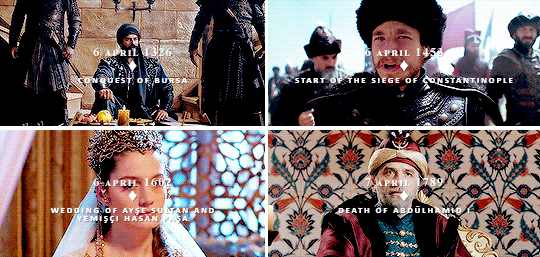

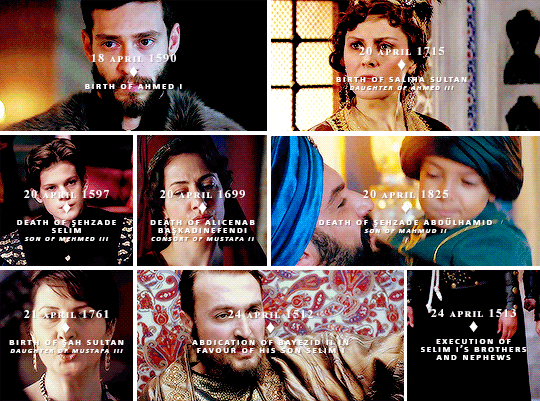
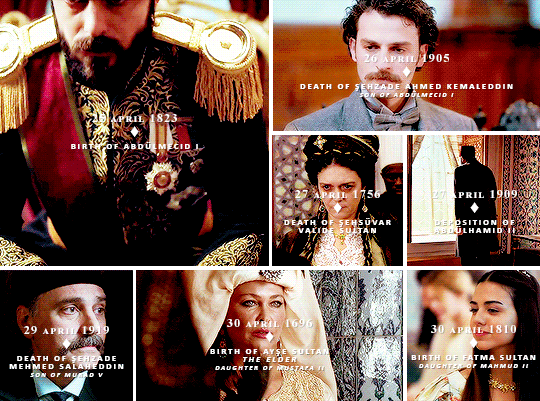
𝐈𝐧 𝐭𝐡𝐞 𝐦𝐨𝐧𝐭𝐡 𝐨𝐟 𝐀𝐩𝐫𝐢𝐥 𝐢𝐧 𝐎𝐭𝐭𝐨𝐦𝐚𝐧 𝐡𝐢𝐬𝐭𝐨𝐫𝐲
#history#historyedit#ottoman history#ayse sultan daughter of murad iii#haseki hurrem sultan#nazikeda kadin#emetullah sultan daughter of mustafa ii#saliha sultan daughter of ahmed iii#alicenab kadin#sah sultan daughter of mustafa iii#sehsuvar sultan#ayse sultan daughter of mustafa ii#fatma sultan daughter of mahmud ii#ottomanladiesedit#*everymonth#abdulhamid i#abdulhamid ii#murad iv#selim i#abdulmecid i
158 notes
·
View notes
Photo
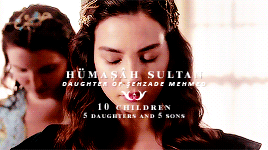
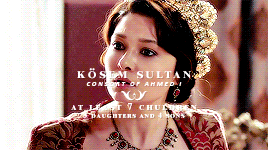

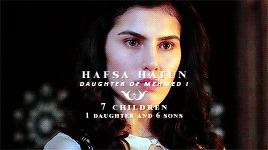


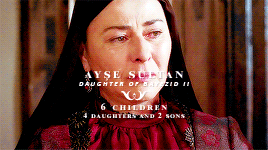

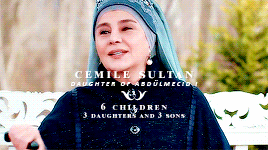
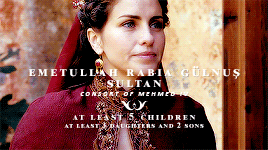
Ottoman women who had the most children
#history#historyedit#ottoman history#humasah sultan daughter of sehzade mehmed#kosem sultan#hatice sultan daughter of selim i#hafsa sultan daughter of mehmed i#fatma hundi hatun daughter of bayezid i#haseki hurrem sultan#ayse sultan daughter of bayezid ii#hatice sultan daughter of mehmed iv#cemile sultan daughter of abdulmecid i#emetullah rabia gulnus sultan#ottomanladiesedit
189 notes
·
View notes
Photo
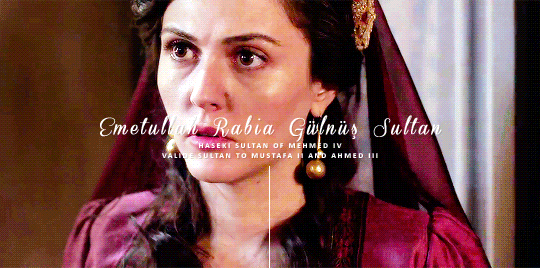
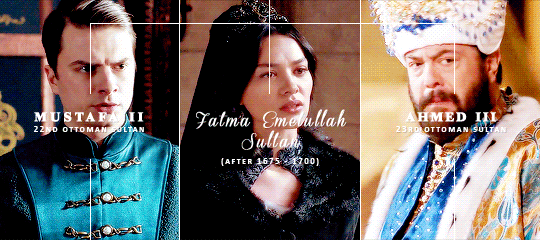

Ottoman princesses who were (presumably) named after Emetullah Rabia Gülnüş Sultan
#history#historyedit#ottoman history#emetullah rabia gulnus sultan#fatma emetullah sultan daughter of mehmed iv#emetullah sultan ii daughter of ahmed iii#emetullah sultan daughter of mustafa ii#emetullah sultan daughter of ahmed iii#ottomanladiesedit
103 notes
·
View notes
Photo
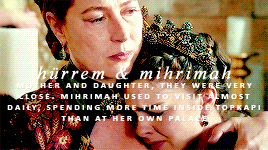

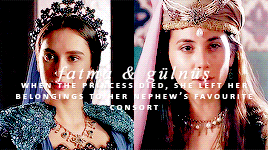

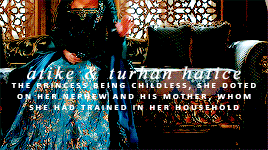
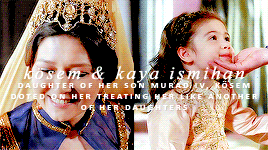
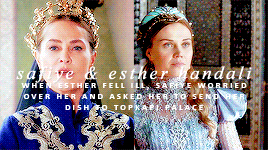

OTTOMANLADIES’ 2ND BIRTHDAY CELEBRATIONS
my favourite female relationships in ottoman history – requested by anon
#history#historyedit#haseki hurrem sultan#mihrimah sultan#safiye sultan#elizabeth i#kosem sultan#kaya ismihan sultan daughter of murad iv#fatma sultan daughter of ahmed i#emetullah rabia gulnus sultan#atike sultan daughter of ahmed i#turhan hatice sultan#esther handali#beyhan sultan daughter of mustafa iii#hatice sultan daughter of mustafa iii#seniha sultan daughter of abdulmecid i#fatma sultan daughter of abdulmecid i#ottomanladiesedit#*requested
762 notes
·
View notes
Photo
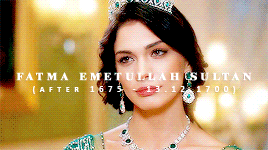
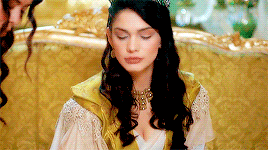
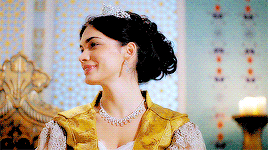

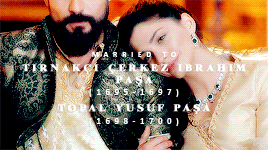


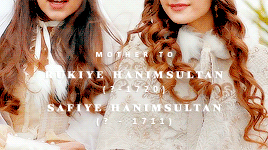
On this day in Ottoman history, Fatma Emetullah Sultan, daughter of Mehmed IV and Emetullah Rabia Gülnüş Sultan, died:
"She is called Emetullah in the Nusretname, and Fatma in Sicili-i Osmani and by Alderson. When Tırnakçı Çerkez İbrahim Paşa, whom she had married in September 1695, was executed in 1697, she secondly married Topal Yusuf Paşa (d. 1716) the following year. It is written in the Nusretname that she died of plague while Sicili-i Osmani states that she died of tuberculosis. Her funeral procession started from her mansion in Bayezit, with the Chief of Black Eunuchs Nezir Ağa and her husband Yusuf Paşa leading it, passed in front of the Alay köşkü [the procession kiosk; most possibly to be seen by the sultan], and terminated at the Valide Mosque, where she was laid to rest next to her father Mehmed IV.
Both Safiye and Rukiye Hanımsultan were daughters of Tırnakçı Çerkez İbrahim Paşa. In 1708, under the sultanate of her uncle Ahmed III, Rukiye Hanımsultan (d. 1720) married Sirke Osman Paşa (d. 1724), who had been called from Bosnia; after Rukiye Hanımsultan died, Sirke Osman Paşa married Emetullah Sultan, one of the daughters of Mustafa II." -- from Necdet Sakaoğlu, Bu Mülkün Kadın Sultanları // Beste Kökdemir as Fatma Emetullah
#history#historyedit#ottoman history#fatma emetullah sultan daughter of mehmed iv#on this day in ottoman history#ottomanladiesedit
348 notes
·
View notes
Photo
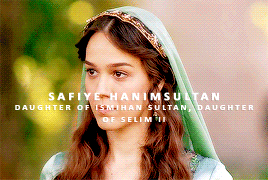

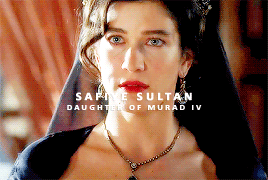
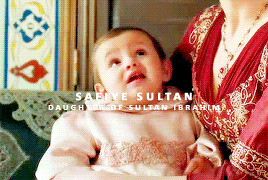



Ottoman Princesses named: Safiye
Safiye is the Turkish equivalent of the Arabic name Safiya or Safiyah, meaning 'pure'. As it was the name of one of the Prophet Muhammad's wives, it was sometimes used for Ottoman princesses as well.
#history#historyedit#ottoman history#safiye hanimsultan#ismihan sultan daughter of selim ii#princessesnames#safiye sultan daughter of murad iv#safiye sultan daughter of mustafa ii#safiye sultan daughter of ibrahim i#fatma emetullah sultan daughter of mehmed iv#safiye sultan daughter of sehzade salaheddin#ottomanladiesedit
536 notes
·
View notes
Note
This is probably a weird question but were there any tall concubines (5'7,5'9,5'10).
Sakaoğlu says Turhan Hatice Sultan was tall, delicate, with white skin and blue eyes
Emetullah Rabia Gülnüş Sultan was said to have been tall by the Venetian ambassador because he saw her garments and apparently they looked like a tall woman's
Gülistu IV. Kadınefendi, consort of Abdülmecid I, was described as tall by Leyla Açba
Ceylanyar II. Hanımefendi, consort of Abdülmecid I, was described as tall and with long gold hair
Çeşmiferah Hanımefendi, consort of Abdülmecid I, was described by Princess Mülkicihan Açba as tall and blonde
Elaru Mevhibe Kadınefendi, Senior Consort of Murad V, was tall and with hazel eyes
Nazikeda Başkadınefendi, the Senior Consort of Abdülhamid II, was described as quite tall with black eyebrows, black eyes and pink skin
Dilpesend III. Kadınefendi, consort of Abdülhamid II, was tall with brown hair
Mezide Mestan III. Kadınefendi, consort of Abdülhamid II, was timid, tall, with dark brown hair and brown eyes
Sazkar Başhanımefendi, consort of Abdülhamid II, was tall with blue eyes and blonde hair
Peyveste II. Hanımefendi, consort of Abdülhamid II, was described by her niece Princess Leyla Açba as tall, with green eyes and auburn hair
Fatma Pesend III. Hanımefendi, consort of Abdülhamid II, was described by Princess Leyla Açba as tall with blue eyes and long curly brown hair
Behice IV. Hanımefendi, consort of Abdülhamid II, was tall, blonde and with blue eyes
Nazperver III. Kadınefendi, consort of Mehmed V, was tall and plump
Emine Nazikeda BaşKadınefendi, Senior Consort of Mehmed VI, was tall, with very light brown eyes and long brown hair
Şadiye Müveddet II. Kadınefendi, consort of Mehmed VI, was tall, with blue eyes and auburn hair
Nevvare Başhanımefendi, consort of Mehmed VI, was tall, with green eyes and long black hair
İnşirah II. Hanımefendi, consort of Mehmed VI, was tall with gorgeous blue eyes and very long brown hair
Atiye Mehisti III. Kadınefendi, consort of Caliph Abdülmecid II, was tall, with blue eyes and light brown hair
#anon#ask post#ask: ottoman history#turhan hatice sultan#emetullah rabia gulnus sultan#gulistu kadin#ceylanyar hanim#cesmiferah hanim#elaru mevhibe kadin#nazikeda kadin#dilpesend kadin#mezide mestan kadin#sazkar hanim#peyveste hanim#fatma pesend hanim#behice hanim#nazperver kadin#emine nazikeda kadin#sadiye muveddet kadin#nevvare hanim#insirah hanim#atiye mehisti kadin#Anonymous
19 notes
·
View notes
Text


📚 QUEERBOOK 2024 is hereee! We made a book by and for LGBTQ+ youth! 🏳️⚧️🏳️🌈
Last year, we asked LGBTQ+ youth: what's your idea of a "queer utopia?"
Not gonna lie - with more than 150 bills introduced in 35 states in 2023 that aimed to restrict student access to inclusive and diverse books and other library materials, the theme felt pretty radical.
And you DELIVERED. With the help of our Youth Voices (amazing queer youth activists from across the country), we compiled your amazing submissions of poetry, short essays and letters, visual art, photography, and more into Queerbook 2024. Like a yearbook, it captures what queer youth are feeling, going through, and hoping for - right here, right now across the U.S.
It's also no accident that it's the perfect small-ish size to stash in your locker or backpack so you can crack it open any time you're looking for some queer connection. :3
Read some more about the book and grab your own limited-run copy of Queerbook 2024 now here.

3K notes
·
View notes
Photo


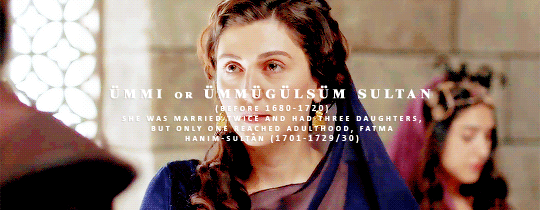
Mehmed IV of the Ottoman Empire + daughters who reached adulthood
#history#historyedit#ottoman history#mehmed iv#hatice sultan daughter of mehmed iv#fatma emetullah sultan daughter of mehmed iv#ummi sultan daughter of mehmed iv#ottomanladiesedit#daughtersof
195 notes
·
View notes
Photo
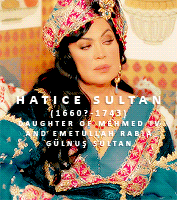
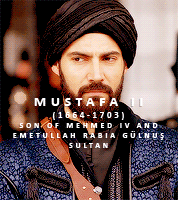



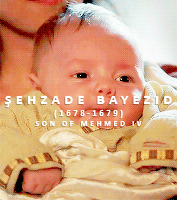
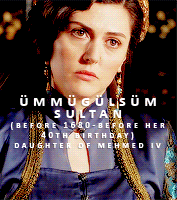

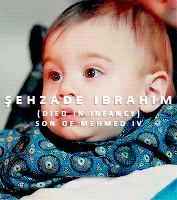
Turhan Hatice Sultan + known grandchildren
#history#historyedit#ottoman history#turhan hatice sultan#hatice sultan daughter of mehmed iv#mustafa ii#ahmed iii#fatma emetullah sultan daughter of mehmed iv#ayse sultan daughter of mehmed iv#ummugulsum sultan daughter of mehmed iv#sehzade bayezid son of mehmed iv#sehzade suleyman son of mehmed iv#sehzade ibrahim son of mehmed iv#*requested#ottomanladiesedit
536 notes
·
View notes
Photo
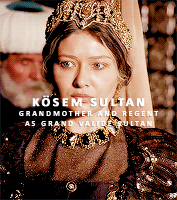


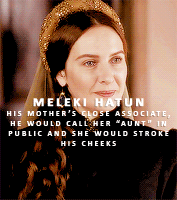
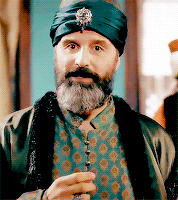
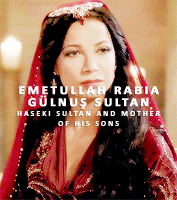

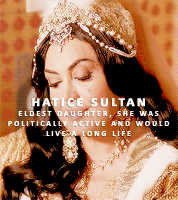

Mehmed IV of the Ottoman Empire + the women in his life
#history#ottoman history#historyedit#mehmed iv#kosem sultan#turhan hatice sultan#atike sultan daughter of ahmed i#meleki kalfa#emetullah rabia gulnus sultan#afife kadin#hatice sultan daughter of mehmed iv#fatma emetullah sultan daughter of mehmed iv#ottomanladiesedit#*womeninlife
2K notes
·
View notes
Note
Hey ! Can you tell me more about Ummi Sultan and Ayşe Sultan ( how did you find her ? So Küçük Sultan neber existed ?) the daughters of Mehmet IV ? And how many childrens have Emetullah before 1675 ( the list of one of the ambassador ) thank you very much !
Giacomo Quirini or Querini (it depends) was the Venetian ambassador to the Sublime Porte from 1671 to 1675. His relazione is dated 1675 but was read to the Senate of Venice in 1676.
Unfortunately I don’t have the actual relazione but only notes I took when I read it. In it, Querini talks about 4 children:
Mustafa is eleven, delicate but very intelligent, is called Efendi for his inclinations. The sultan likes to take him to the mosque sometimes
Ahmed is three
Aidé Sultan is seven and already betrothed to Culoglu Musahip
Hadice is two and is promised to Carà Mustafa Caimacan
(these are my actual notes)
Now the princes’ ages are right but Hatice’s is not because she was actually the eldest daughter and - more importantly - she was never bethroted to Kara Mustafa Paşa… she was, on the other hand, betrothed to a Musahip Paşa (whom she later married: Dâmâd Muşâhib Mustafa Paşa, also called Kuloğlu.. checks out, right?)… which is how I realised that he had mistaken one princess for the other.
(about this I would like to digress a little: I still think that Hatice being seven is wrong, because she got married in 1675 when she was 15… I’ve read it somewhere but I literally cannot find where for the life of me. In any case, I still think that Hatice was the eldest child but often information about princesses is either scarse or wrong because they’re not interesting from the ambassadors’ povs. It’s quite unusual that Querini even gave their names!!)
The other princess was quite the enigma to me for such a long time because I knew that Gülnüş’ daughters were Hatice and Fatma Emetullah and well.. Aidé doesn’t sound like Fatma nor Emetullah… which is why I first thought to discard his information.
Then I remembered that there had been some misunderstanding in Ottoman historiography about a Küçük Sultan, which means Little Princess. While Küçük had been taken as a name, Uluçay first realised that it wasn’t at all but thought that the princess was Ümmi Sultan… but that’s where Giacomo Querini arrives with his relazione to solve the enigma: the little princess is called Ayşe (which does sound like Aidé) and she must have died in infancy because, as Uluçay says, Kara Mustafa Paşa never became a Damad (also because he was executed in 1683 but that’s another matter).
Caimacan simply means “lieutenant governor (vizier) from the old Turkish empire”, it is frequently found in European writings about the Ottoman Empire as a substitute of Vizier.
At the end of all of this, I have realised that Fatma Emetullah must have been born after 1675… which checks out as a) she got married in 1695 (pretty late, if she had been closer to Hatice’s age) and b) she died young in 1700 from post-natal complications.
About Ümmi Sultan, her date of birth is usually given as “before 1680″ and her death as 1720 (per Juliette Dumas), which makes sense as she’s supposed to have died “right before her 40th birthday”. As I have not read Querini’s successor’s relazione, I have no idea if Ümmi was Gulnus’ daughter too or not
#lovecloveing#ask post#ask: ottoman history#ayse sultan daughter of mehmed iv#hatice sultan daughter of mehmed iv#emetullah rabia gulnus sultan#fatma emetullah sultan daughter of mehmed iv#ummi sultan daughter of mehmed iv
15 notes
·
View notes